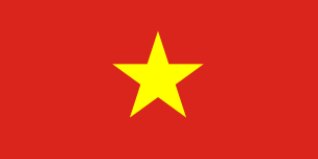Set amidst tranquil pine forests and lotus ponds, the mausoleum of Emperor Minh Mang is one of the most celebrated Hue tombs. As the final resting place of Vietnam’s second Nguyen emperor, it reflects a deep connection between imperial power and Confucian philosophy, conveyed through perfect symmetry, serenity, and spiritual symbolism. Discover it all with HoaBinh Tourist today!

Explore the poetic resting place of a great emperor, where architecture and nature blend into timeless elegance.
1. Introduction to the Mausoleum of Emperor Minh Mang
1.1. Location
The tomb is located in Cam Khe Mountain, about 12km southwest of Hue city center. Surrounded by natural hills and lakes, Minh Mang Tomb Hue sits on the west bank of the Perfume River. It’s easy to reach via car, motorbike, or bicycle. With HoaBinh Tourist, guests can enjoy the Hue one-day tour for the most relaxing ride through the countryside.
1.2. Opening hours and entrance fee
The mausoleum of Emperor Minh Mang is open daily, including holidays:
- Opening hours: 7:00 AM – 5:30 PM (Summer); 7:30 AM – 5:00 PM (Winter)
- Entrance fee:
- Vietnamese adults: 100,000 VND
- International visitors: 150,000 VND
- Children under 1.2m: Free
1.3. How to get there
From central Hue, travelers can reach the tomb by:
- Private car or HoaBinh Tourist’s comfortable coach service
- Cycling tours through rural villages and rice fields
- Perfume River boat cruises, stopping directly at the tomb’s pier
HoaBinh Tourist offers flexible combinations for half-day or full-day tours, including this site.
1.4. History
Commissioned by Emperor Minh Mang himself and completed in 1843 under Emperor Thieu Tri, the tomb is more than a burial site – it’s an imperial legacy. Known for his political strength and Confucian ideals, Minh Mang chose this peaceful, spiritual location to reflect his life’s values.
The entire structure was carefully aligned according to feng shui, symbolizing cosmic harmony, power, and immortality.

The past lingers among lotus ponds and pine trees – a royal soul rests in perfect balance.
1.5. Architectural Highlights
The mausoleum of Emperor Minh Mang stands out among the Hue tombs for its stunning fusion of natural landscape and man-made symmetry. The layout follows a strict “axial path,” guiding visitors from one structure to the next in a flowing, spiritual journey. As a result, visiting this site is undoubtedly one of the most meaningful things to do in Hue.
Key architectural features include:
- Ornate stone bridges
- Imperial gates with dragon carvings
- Lotus-filled lakes and courtyards
- Red and yellow-tiled pavilions, symbolizing royalty and eternity

Every gate and garden tells the story of the balance between heaven, earth, and imperial will.
2. Best Time to Visit the Mausoleum of Emperor Minh Mang
The ideal months are February to April and September to November, when Hue enjoys mild weather and clear skies. Early mornings offer the most serene atmosphere and best lighting for photography, especially with mist lingering over the lake.

Catch the tomb at its most magical when nature is in full bloom and the light is soft and golden.
3. Highlights of Minh Mang Tomb in Hue
3.1. Dai Hong Mon Gate
The main entrance to the complex, Dai Hong Mon Gate, is a striking triple-arched gateway, adorned with dragon and phoenix motifs – traditional East Asian symbols of authority, balance, and cosmic union. The central arch was exclusively for the emperor, while the side gates were used by mandarins, officials, and ceremonial processions.
Surrounded by pine trees and quiet lotus ponds, the gate sets a sacred tone for the visit – a passage from the everyday to the eternal.

A regal welcome awaits through the sacred arch of Dai Hong Mon Gate.
3.2. Sung An Palace
Located beyond Hieu Duc Mon, this is the heart of the tomb’s spiritual center. Sung An Palace is the main ancestral temple where Emperor Minh Mang and Empress Ta Thien Nhan are honored. The palace features red lacquered columns, elaborate altars, and ceremonial items used during royal memorials.
Visitors are invited to respectfully observe or offer incense – a quiet act of connection with Vietnam’s imperial lineage.
3.3. Hien Duc Mon Gate
Hien Duc Mon Gate, also known as the Gate of Benevolence and Virtue, stands within the sacred Tam Dien complex of the mausoleum of Emperor Minh Mang, marking the solemn entrance to the core sanctuary . Built on a square base symbolizing the earth, this majestic gate embodies imperial dignity and spiritual reverence.
Its architecture exudes antiquity and serenity – visitors are welcomed through its grand arches into a hallowed space where Emperor Minh Mang and Empress Ta Thien Nhan are honored with deep devotion. Intricately carved floral motifs and restrained elegance reaffirm its role as a threshold between the worldly and the divine.
3.4. Bai Dinh Yard
This spacious ceremonial courtyard was once the site of imperial rituals. Flanked by rows of stone mandarins, elephants, and horses, Bai Dinh reflects Confucian respect for hierarchy and tradition. The carefully arranged statues – each with unique facial expressions and posture – stand as eternal guardians of the royal soul.

Silent stone mandarins stand in tribute – guardians of a royal past.
3.5. Minh Lau Pavilion
Known as the Pavilion of Brightness, Minh Lau sits on a small hill symbolizing wisdom shining from above. Its square base, octagonal shape, and round pond nearby reflect the harmony of Earth (square), Heaven (circle), and humanity (octagon) – a perfect Confucian triad.
This pavilion also served as a resting place for royal visitors and scholars who came to pay their respects to the emperor.

A poetic symbol of enlightenment nestled beneath the Hue sky.
3.6. Tan Nguyet Lake
Translated to “New Moon Lake”, Tan Nguyet is a crescent-shaped body of water that lies peacefully in front of the emperor’s burial mound. The lake’s stillness, surrounded by lush trees and bridges, mirrors the reflective nature of the site.
Its name evokes a cycle of renewal – echoing Buddhist themes of rebirth and spiritual continuity.

A moon-shaped lake mirrors the peace of an emperor’s eternal rest.
3.7. Thong Minh Chinh Truc Bridge
This elegant stone bridge spans Tan Nguyet Lake and links the Minh Lau Pavilion to the final resting place of the emperor. Its name, “Bright and Straight Path”, reflects both physical clarity and the moral integrity championed by Minh Mang during his reign.
Lined with symbolic carvings and aged stone railings, the bridge offers not just a scenic route, but a philosophical one.
4. Tips for Visiting Minh Mang Tomb
Make your journey seamless and meaningful with these thoughtful tips:
- Wear comfortable shoes: The site spans hills, gardens, and steps.
- Visit early or late afternoon: For fewer crowds and better light.
- Bring water and a sunhat: There’s limited shade along the axial path.
- Respect the sacredness: Avoid loud talking and be mindful of your surroundings near altars.
- Book a guided tour with HoaBinh Tourist: To uncover the full stories behind every structure with professional narration and seamless logistics.
Respectful steps and open hearts create a meaningful imperial experience.
Read more: Explore Imperial City Hue: iconic landmark you shouldn’t miss
Explore Ngo Mon Gate – The Majestic Symbol of Hue Citadel
Thien Mu Pagoda – A Peaceful Spot in the Heart of Hue
5. Let us take you deeper into Vietnam’s royal soul – through comfort, culture, and connection
The mausoleum of Emperor Minh Mang is not just a historical site – it’s a poetic blend of landscape and legacy. As part of our “Vietnam – Timeless Journey, Endless Love” campaign, HoaBinh Tourist offers exclusive tour experiences that help you uncover the depth of Hue.
Why choose HoaBinh Tourist for your Hue journey?
- All-in-one Hue travel service: From limousine transfers to 45-seat coaches.
- Fast flight booking: Flexible options at the best fares.
- Premium resort stays: 5-star comfort in the heart of Vietnam’s cultural heritage.
- Cultural tour design: Curated routes, historical interpretation, and photo stops at key highlights.
- Visa-free travel for guests from the Czech Republic, Poland, and Switzerland – enjoy easier access as part of Vietnam’s national tourism push.
Let every step you take through Hue echo with the elegance of the past – while HoaBinh Tourist ensures the journey is seamless, inspiring, and unforgettable.

From timeless temples to tranquil tombs, journey deeper with HoaBinh Tourist by your side.












